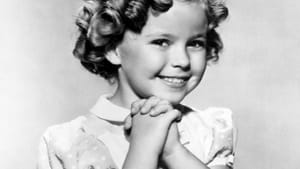Stay in the Loop
BSR publishes on a weekly schedule, with an email newsletter every Wednesday and Thursday morning. There’s no paywall, and subscribing is always free.
The meaning of Shirley Temple
John F. Kasson's 'Little Girl Who Fought the Great Depression'

Shirley Temple was the sunshine of the bleak days of the Great Depression, the symbol of America’s optimism and resilience, yadda yadda yadda — but what does that actually mean? John F. Kasson, in The Little Girl Who Fought the Great Depression: Shirley Temple and 1930s America, unpacks Temple’s significance as she was used — both intentionally and not — to further a variety of political, economic, and social agendas.
Temple’s sunny smile, Kasson argues, served the same function as Franklin D. Roosevelt’s toothy grin — both expressed optimism and confidence. FDR’s dismissal of Hoover’s dour pessimism constituted a fundamental reframing of the symbolic function of the American president, in which he became cheerleader in chief. Every president — and candidate — since has had to campaign with a smile and present him- or herself as in touch with the emotional mood of the country.
The first full year of FDR’s presidency, 1934, was the beginning of the New Deal and the year FDR got Democratic majorities in both houses of Congress. It was also the year Temple was making the transition from two-reelers to feature films — and the year in which the studios adopted the Motion Picture Production Code, a.k.a. the Hays Code. As with FDR in Washington, Kasson argues, Temple was the right girl at the right time for Hollywood: “[S]he represented an emblem of virtuous innocence for an industry scurrying for moral cover” (68).
Temple struck a chord with the moviegoing public: The following year, 1935, was the first of her four-year run as the top box-office star in the country (a run, by the way, never equaled by another woman, er, female). Her appeal wasn’t just about her innocence, Kasson says: “Contributing to [her] popularity... was the widespread sense of shame and humiliation that her movies addressed... especially as it related to the loss of male authority” (79). That male authority was reasserted in Temple’s films, many of which gave her character a father (or father figure) to whom she responded with “flamboyant cuddling [that is] deeply suggestive of pedophilia and incest to many critics today [but that] clearly delighted Depression audiences” (81).
 Temple’s best-known costar, though, was Bill Robinson, with whom she made four films:
Temple’s best-known costar, though, was Bill Robinson, with whom she made four films:
[W]hen a smiling Bill Robinson entered Shirley Temple’s movies, it was to enact the racial politics of the mythic plantation South. An essential aspect of that performance, dating back to antebellum blackface minstrelsy, was a broad smile. That smile complemented FDR’s grin of confident command and Shirley Temple’s smile of innocent trust. It signaled contentment, servility, and simplicity, from a race white viewers believed to be without ambition or high intellect. (89)
Boomer rebirth
Kasson’s focus is almost entirely on Temple’s role (sic) in the ’30s, though in his last chapter he looks forward briefly to the postwar era, when she enjoyed something of a renaissance as my fellow boomers and I discovered Temple on our families’ black-and-white TVs. Just about every woman my age with whom I’ve discussed Temple has responded immediately with an anecdote — usually about her mother and/or early childhood consciousness-raising.
For instance, my friend Rita, who’s black, was forbidden by her mother to watch any of Temple’s films, not just the ones starring Robinson. Rita’s mom would presumably endorse Kasson’s observation that “[t]hese films’ music emphasized not uptown swing and sophistication but down-home folk tunes — at least as mainstream whites understood them, for in fact they leaned heavily on blackface minstrel material... The scent of magnolia blossoms contains the sting of burnt cork” (97-98).
 The lesson in my house was about feminism: My sister — who had a Shirley Temple doll (still does, she suspects, up in the attic somewhere) — remembers our mother’s dismissal of Temple’s cuteness as “the lowest form of femininity,” a lesson she and I internalized quite thoroughly. I don’t remember that specific comment — or any kind of blowback from Mom about my watching Temple’s films. In fact, I attribute my lifelong love of movie musicals (culminating in a decade or more of tap lessons as an adult) to that early exposure.
The lesson in my house was about feminism: My sister — who had a Shirley Temple doll (still does, she suspects, up in the attic somewhere) — remembers our mother’s dismissal of Temple’s cuteness as “the lowest form of femininity,” a lesson she and I internalized quite thoroughly. I don’t remember that specific comment — or any kind of blowback from Mom about my watching Temple’s films. In fact, I attribute my lifelong love of movie musicals (culminating in a decade or more of tap lessons as an adult) to that early exposure.
An obligatory smile
Why the ’50s renaissance? My amateur guesses include the fact that in those three-channel early days of TV, a lot of black-and-white movies and shorts of the ’30s and ’40s were used as appropriate kid vid fodder. Even when local stations came up with original programming, that programming provided transitions between Three Stooges shorts and Popeye cartoons, as in Philly icon Sally Starr’s show.
And presumably not all mothers reacted as negatively to Temple’s persona as Rita’s and mine did; many girls who grew up with her in the ’30s were mothers of their own daughters in the ’50s and ’60s and shared the movies as a happy bit of nostalgia. (Some of these boomers passed on the tradition to a third generation, as my thirtysomething friend Jill’s mother did.)
At bottom, though, Temple’s message(s) worked just as well a generation after her movies were made. As Kasson observes: “America’s model child and model consumer in the Great Depression, she prepared the way for the culture of postwar abundance, in which the smile, once a determined emblem of hope, became an obligatory expression.” The box office reign of Doris Day and Julie Andrews between 1960 and 1967? Turns out that wasn’t a coincidence.
What, When, Where
John F. Kasson, The Little Girl Who Fought the Great Depression: Shirley Temple and 1930s America. N.Y.: W.W. Norton, 2014. Available at Amazon.
Most of Temple's movies are available on DVD or Blu-ray; many are available for rental via Amazon Prime.
Sign up for our newsletter
All of the week's new articles, all in one place. Sign up for the free weekly BSR newsletters, and don't miss a conversation.

 Judy Weightman
Judy Weightman